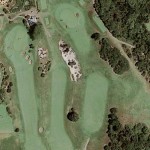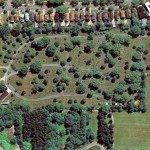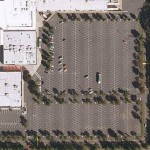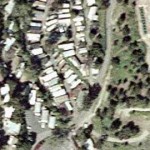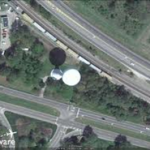Your lost dog is visiting your feeding station! You are seeing him on the camera and you want to rush right out there and scoop him up and bring him home! Not so fast! You have worked so hard being patient and diligent. Don’t mess it up now by scaring him off. Then you will have to start all over in a new location. Now is the time to carefully strategize your next move.

Never, ever post the exact location of a sighting, your feeding station or a trap location on Facebook, Craigslist or any kind of media. Keep your cards close to the vest. You don’t need wanna-be heroes, or curiosity seekers trying to “help” you out by visiting the area. This can pressure your dog to move on again.
Don’t be alarmed if your dog doesn’t visit the feeding station every day – especially at first. He will probably come at dawn and/or dusk. At first he may just grab a bite and run off; or he may take the whole bowl and carry it off under a bush or deck, to eat in hiding. You will have more success if you position your feeding station so that he has some privacy, but also an easy escape route if he feels threatened.
Remember that the pictures you see on the camera may at first glance, not look like your dog. Study them carefully to be sure. You can download them into a photo editing program (most computers are sold with a simple one already installed) and lighten or enhance the pictures. Colors can be distorted, especially in the nighttime pictures, and dogs can look smaller or larger than they really are depending on the height of the camera. If your dog did the grab and dash; you might only get a glimpse of an ear or a tail. Generally in a few days, they will be more comfortable at the feeding station and you will get better images.
Your dog may be sharing the feeding station with other animals. No worries. We see this all the time and it makes for some pretty interesting trail camera photos. It has no bearing on whether or not you will catch your dog, so don’t let it bother you. In fact, the presence of other animals coming and going may be reassuring to your dog. It must be a safe place if other animals are there, right? You may see skunks, cats, raccoons, possums, crows, and even other lost dogs on the photos. Switching to beef-based foods may reduce the number of other visitors. If you are having lots of cats and raccoons visit, try switching, especially if you have been using fish.
While you are waiting for your lost dog to fall into a predictable pattern of a behavior, you want to be thinking about the next step: capturing him.
For some dogs, especially those that are extremely bonded with their owner, the owner may simply have to sit on the ground, close enough to the feeding station that they can see the food bowl, but far enough away that the dog doesn’t feel threatened. Plan your visit when you expect your dog, judging from the pattern of the date/time stamp on the pictures. Bring a book and your tasty treats, collar and leash, and sit quietly on the ground. Read, sleep, or check emails on your phone. But set your phone to silent and don’t talk on it! Be patient. Your dog may appear and approach you. Don’t make any sudden moves. It may take a few days of this, but your dog might crawl right into your lap, when the lightbulb suddenly goes on in his head.
If you lost a newly acquired dog or foster dog that isn’t bonded to you, it might not be so easy; and you should probably consider using a humane trap. Now is the time to start inquiring about where you can rent, borrow or buy one. Check your local animal shelter or animal control facility first. They may have one available that they will rent for a small fee.
Does your dog generally like to go into a crate or kennel? Dogs that are very comfortable being crated are usually easier to trap.
Is your dog fearful of a kennel or crate? Check to see if there a fenced yard, tennis court, ball diamond, or garage nearby that you can lure your dog into. Or maybe you will want to slowly set up some temporary kenneling. Again, patience is the key word. Slowly moving the food bowl, day by day closer to an enclosure until your dog is finally eating in the enclosure can be a very successful method. If you proceed too quickly, you risk scaring him off to another area. Starting all over is always slower than being methodical and patient, so take your time.
Next we’ll talk about humane trapping – because we have many tips to share that will help you maximize your chances for success. Part 9
Our tips, ideas and articles are based on information gathered from over thousands of successful lost dog recoveries. Any advice or suggestions made by Lost Dogs of Wisconsin/Lost Dogs Illinois is not paid-for professional advice and should be taken at owner’s discretion.
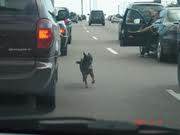 from you when he or she sees you. Yes, you read that correctly. If lost, your dog, even one that has always been friendly and your devoted companion, will bolt in the opposite direction from where you are.
from you when he or she sees you. Yes, you read that correctly. If lost, your dog, even one that has always been friendly and your devoted companion, will bolt in the opposite direction from where you are.


